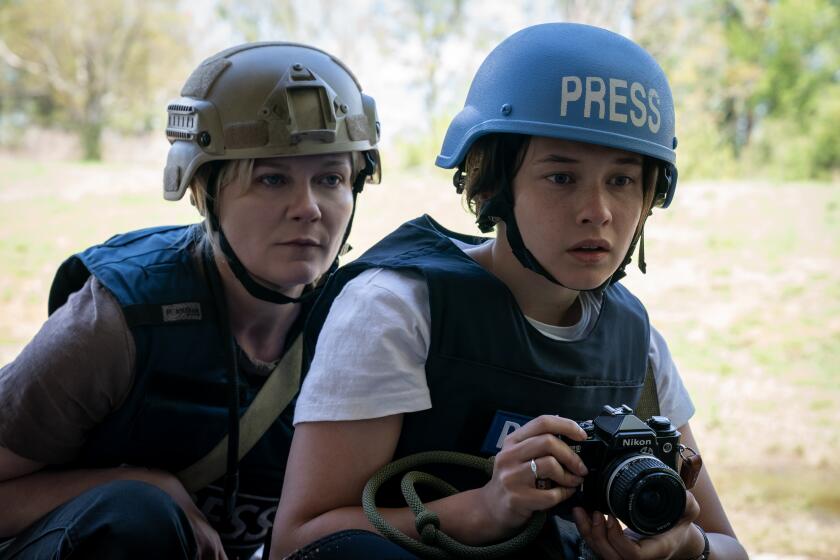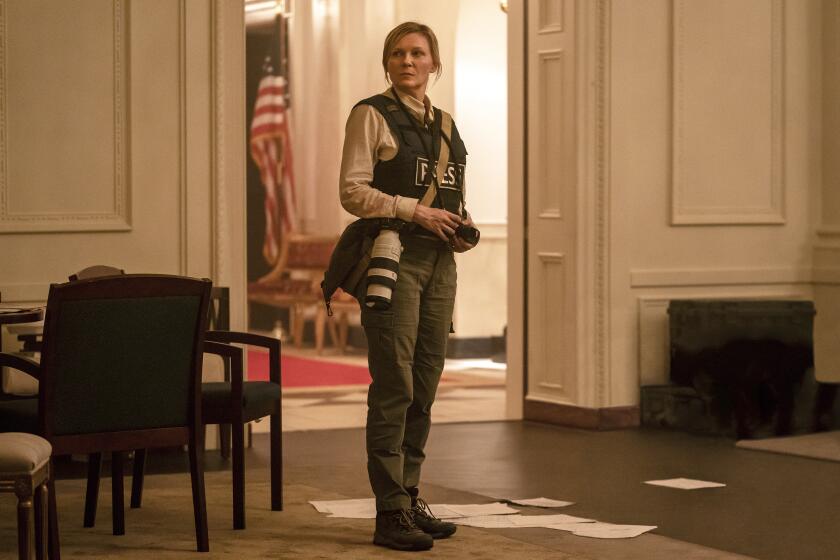Review: Pixar’s ‘Inside Out’ magically brings emotions to life
Pixar stands alone, and “Inside Out” shows you why.
At once sophisticated and simple, made with visual magic and emotional sensitivity, casually probing deeper questions about what matters in life, “Inside Out” typifies the best of that cartoon colossus. It goes not only to places other animation houses don’t dare, but also to places the rest of the pack doesn’t even know exist.
The same could be said for Pixar mainstay and “Inside Out” director and co-screenwriter Pete Docter. The third animator to be hired by Pixar in 1990 and Academy Award-nominated for his work on “Toy Story,” “WALL-E” and “Monsters, Inc.,” Docter hit his stride when he took home the animated feature Oscar for directing “Up.”
Like that film, “Inside Out” manages to be honest and unafraid but never cheaply sentimental where emotion is concerned, evoking a largeness of spirit whose ability to be moving sneaks up and takes us by surprise. Its examination of the life and thoughts of an 11-year-old Minnesota girl named Riley Anderson is memorable both for what it does and the relaxed way it does it.
“Inside Out” doesn’t just deal with Riley’s actions. It combines imaginative conceptualization with inventive animation to tell a parallel story, to show what’s going on in Riley’s mind (“Meet the little voices inside your head” is one of the film’s ad lines) as five different emotions push her to act in different ways. It was, Pixar creative chief John Lasseter has said, “one of the most difficult films we’ve ever made.”
This visualization of the mind was not done off the top of anyone’s head, so to speak. Docter and co-writers Meg LeFauve and Josh Cooley consulted closely with serious scientists, some of whom claimed humans have to deal with up to 27 different emotions. The five that made most lists were selected and then, in a process that took years, the story and the relationships between emotions were refined and an ideal cast of actors was assembled to energetically voice them.
At first there is only Joy (Amy Poehler), a bouncy, glowing pixie type alone at the control console in what everyone calls headquarters. “Just Riley and me, forever,” she enthuses, ever the optimist, but it is not to be. In just 33 seconds, Sadness arrives, and soon after come Anger, Disgust and Fear, each with an agenda to advance and a role to play.
A nervous string bean type, Fear (Bill Hader of “Saturday Night Live”) worries a lot and keeps Riley safe. “We didn’t die today” is a typical pronouncement. “I call this day an unqualified success.”
Disgust (Mindy Kaling) protects Riley from things that might not be good for her, while Anger, a short squat guy with a very short temper (comic Lewis Black), wants you to know, as Joy very deftly puts it, that he “cares very deeply about things being fair.”
Which leaves us with Sadness, an emotion with a purpose no one can quite put a finger on, who is given to saying things like, “Crying helps me slow down and obsess about the weight of life’s problems.” Voiced by Phyllis Smith of “The Office” and beautifully visualized with big round glasses and a huge turtleneck sweater, Sadness is a puzzle even to herself.
Joy, by contrast, is a confident individual who likes to say, “We can fix this” and “We can do it.” It’s Joy who shows us around headquarters, explaining how memories (visualized as glowing globes that are color-coded by emotion) are created. Core memories, the really important ones, have combined to create a series of personality traits called islands (Goofball Island, Friendship Island, Family Island) that combine to “make Riley Riley.”
So far, so good. But then, in an abrupt jolt at the end of the “Inside Out” pre-credit sequence, the family (including Mom [Diane Lane] and Dad [Kyle MacLachlan]) abruptly moves from Minnesota to San Francisco so Dad can go to work for the inevitable start-up company.
Naturally the move upsets Riley, and it causes chaos in headquarters as well. Sadness, it seems, can’t stop herself from touching happy core memories and turning them sad, and when she and Joy get into a tussle about this, they both are accidentally ejected from HQ and transported to the endless corridors of Long Term Memory, where things really get interesting.
For as imagined by Docter and his cohorts, these outer reaches of the mind are filled with numerous areas of fascination. They are patrolled by Mind Workers like Forgetters who periodically assign recollections to the dreaded Memory Dump, as in “nothing comes back from the Dump.”
On their own without a map and desperate to get back to headquarters, Joy and Sadness experience Imagination Land (where the French fries grow tall as sequoias), the Hollywood-style Dream Production area, the Train of Thought (it’s a real train) and the Subconscious, where, Sadness explains, “they take all the troublemakers.”
Meanwhile, back at HQ, Fear, Anger and Disgust are on their own running Riley’s mind, which leads to the kind of emotional states and genuine problems for Riley that are completely consistent with the pre-teen state of mind. The question is whether Joy and Sadness, helped by Riley’s almost forgotten imaginary friend Bing Bong (voiced by Richard Kind) can make it back in time to stop real damage being done to Riley’s life.
Because the Pixar brain trust (which, besides Docter, includes executive producers Lasseter and Andrew Stanton) is brilliant at story, the saga of “Inside Out” finds room for crisp action, genuine jeopardy, cartoon slapstick, even adult humor like a jest that references “Chinatown.”
Even better, as in the best of Pixar, are thoughts and insights about the human experience. Though it doesn’t seem that way at first, the five emotions are not rivals jousting for power and control; they are united by wanting the best for Riley. And when Joy begins to understand the value and purpose of Sadness, that leads to moments no one is going to forget.
More to Read
Only good movies
Get the Indie Focus newsletter, Mark Olsen's weekly guide to the world of cinema.
You may occasionally receive promotional content from the Los Angeles Times.







